process About KUNISAKI
In ancient time, 12th emperor Keikou pointed the peninsula when cruising and said “Is that a Kuni-no-saki(far east of the country)?”, and people began to call this area Kunisaki.
Refreshingly blue sea and isolated land has been embracing its own belief calmly and that made Kuni-no-saki very unique place where people pray gods of Shinto and Buddhism, worshipping the nature, and respecting the ancestors where you will feel like the soul of Japan still remains here.
Kayashima Brewery continuously brewing sake of Kyushu taste in beautiful land of Kunisaki.
6 regions where Buddhism culture flourished
You will feel the unique atmosphere and aspect when you wander around in Kunisaki peninsula. With temples, Buddhist statues, stone statues of Buddhist gods called Magaibutsu, and stone towers placed on roadsides on all over the peninsula, gods of Shinto and Buddhism has been co-exist and melting into the area through eternal time.
Kunisaki peninsula is also called as Rokugou-manzan. Rokugou indicates 6 regions; Aki-gou, Musashi-gou, Kunisaki-gou, Imi-gou, Kunawa-gou, and Tashibu-gou. In the Nara era and Heian era, circa 710 to 1192 A.D., Buddhist culture flourished on the peninsula with many temples and statues on 6 valleys that spreading from the center of Mt. Futago towards seashore.

The region with gods of Shinto and Buddhism co-exist
Usa shrine, locating in the northeast of Kunisaki peninsula, is the head shrine of nearly 44,000 Hachiman shrines in Japan. Kunisaki peninsula is known as a place where Synchronism of Shinto and Buddhism began in Nara and Heian era. Myriads of gods and deities, worshipping the whole nature, had been an original belief in Japan. On the other hand, mountain worship, admiring the gods of mountain with the gratitude and awe, had developed on the peninsula. The broad-minded ideology and the harmony of indigenous belief mixed together with external religion brought Syncretism of Shinto and Buddhism to this region, where people inheriting and admiring rich natures such as mountains, forests, trees and huge rocks, as well as their own culture.

Fuki-ji; noble and graceful national treasure
Among the all temples in Kunisaki peninsula, Fuki-ji is known as its beautiful figure. Oo-dou, a great hall, stands at the end of stairs with stone statues of two guardian Deva kings appears astonishing in the autumn when exquisite tree leaves turning their colors into yellow and red as if they are protecting the temple from the evil. The hall was built in the late 12th century in Amidadou style, a square building with colorful paintings inside, and it is the oldest existing wooded building in Kyushu area. Spectacular yet calm hall stimulates our imagination of ancient clans once prayed for their happiness here.

Fudou-myouou looking down the mountain,protecting a river
You will find astonishingly steep mountain hills in Kunisaki peninsula. Mountains with so many strange shaped stones used to be a place for ascetic practices. Tennen-ji temple is believed to have built by Ninmon monk in 718 A.D. Mumyou-bashi is a small bridge between 2 mountains at back side of the temple; the bridge was used to challenge monks’ mental stability. Fudo Myoo or Acala, a Buddhist divinity, was sculpted on the giant rock in Nagaiwaya River in front of the temple wishing to protect the area from severe flood.
Climbing the steep slope of piles of stones that is believed to be built by Oni, a mystic creature, over just one night, a stone statue of Buddhist gods sculpted on the gigantic rock called Magaibutsu appears at the foot of mountain in Kumano area, west side of Mt. Tahara or Mt. Nokogiri in Bungotakada city. Amida Nyorai or Amitabha Tathagata with dignified feature, and Fudo Myoo or Acala showing his sturdiness and kindness suit beautiful landscape at the bottom of the mountains.
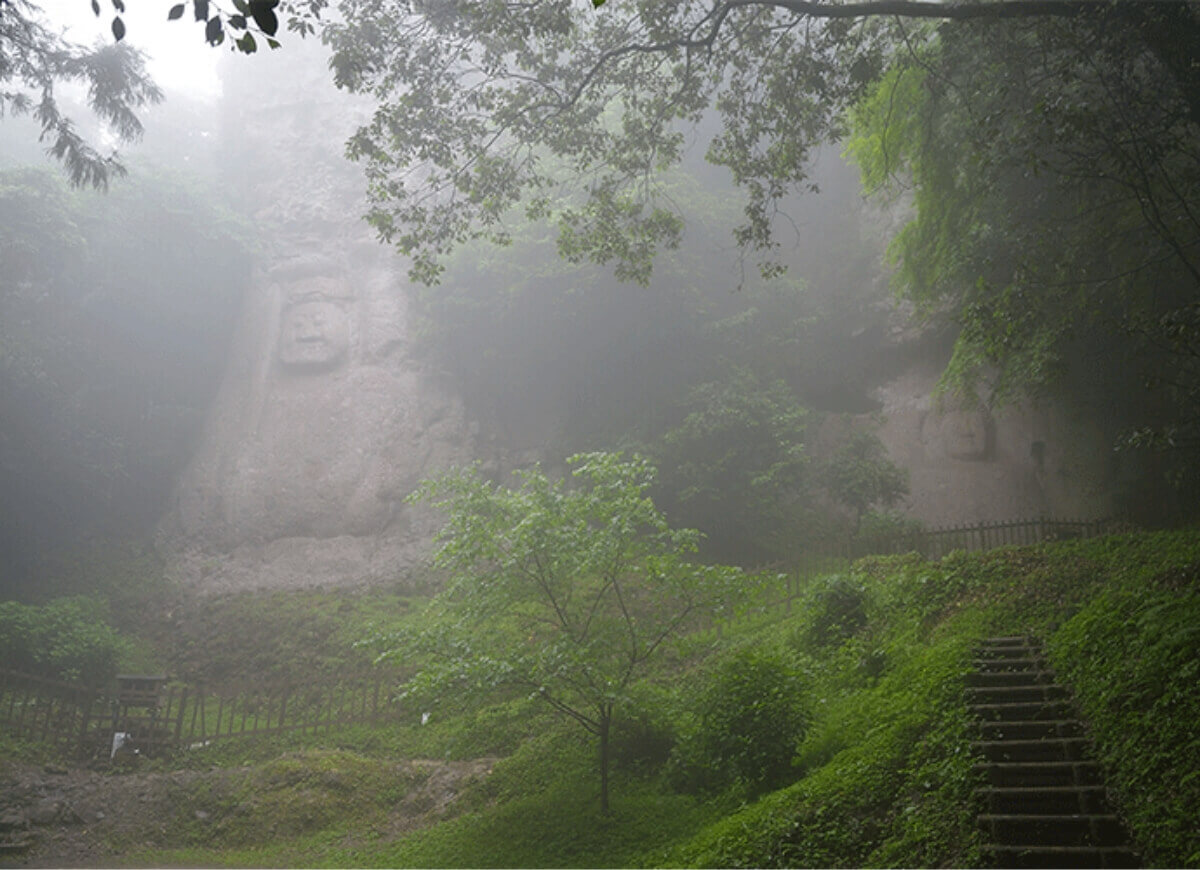
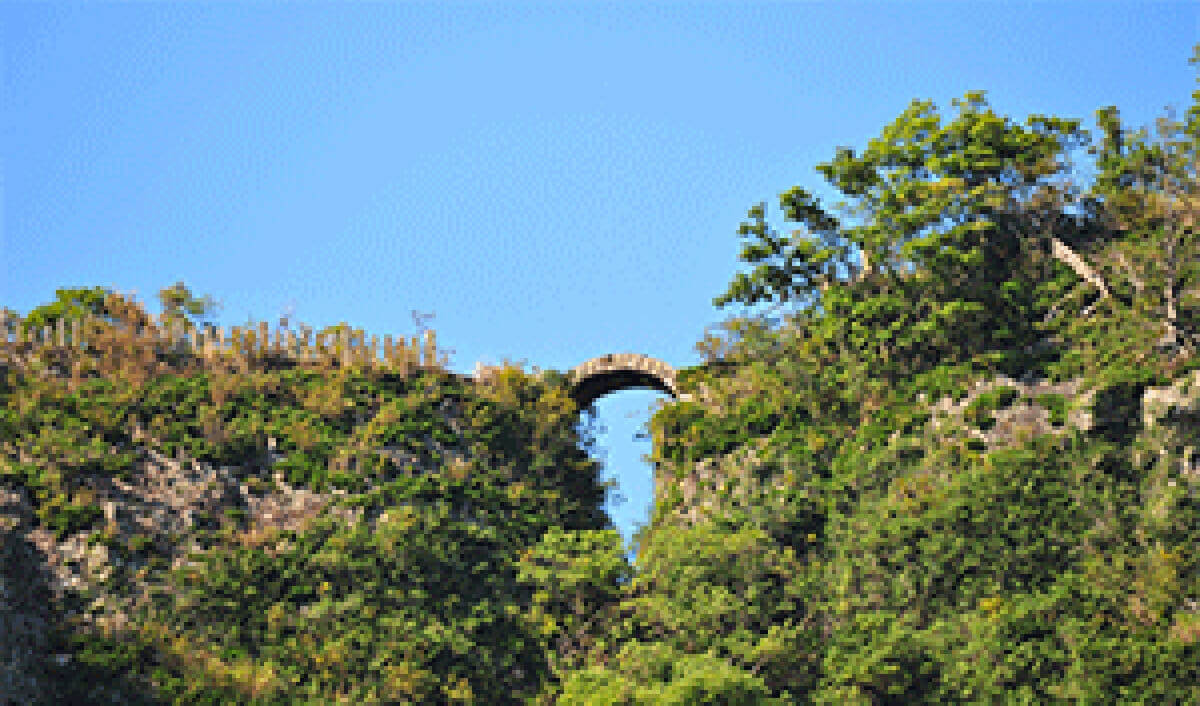
Agricultural heritage including beautiful paddy fields that remains over 1000 years
When rice welcomes its harvest season, it shines golden yellow at Tashibuno-shou, manor in Tashibu area. Tashibu region is one of the Rokugou locates in west side of the peninsula, Bungotakada city. The wilderness became festive paddy field in 743 A.D, and was one of the most significant of 18 fields in the area. With the wisdom and accurate calculation, narrow-small lands were transformed into uniquely shaped fields and its beautiful landscape still remains as it is for over a millennium.
This area also was acknowledged as a World Agricultural Heritage with its effective usage of land and water known as “Recycling the sawtooth oak forest and reservoir in Amii area, Kunisaki peninsula”, a traditional agricultural system to be inherited to next generation. The agricultural culture of Kunisaki has evolved with the effort and creativity of local people trying to eliminate the inconvenience, accepting the nature as it is, and that made the system possible to take over from generation to generation.
※Globally Important Agricultural Heritge System (GIAHS)…
is a system that the food and agriculture organization of the United Nations certifies to protect and hand down to the next generation the areas that has agricultural, forestry and fishery products, biological diversity and agricultural land scape.
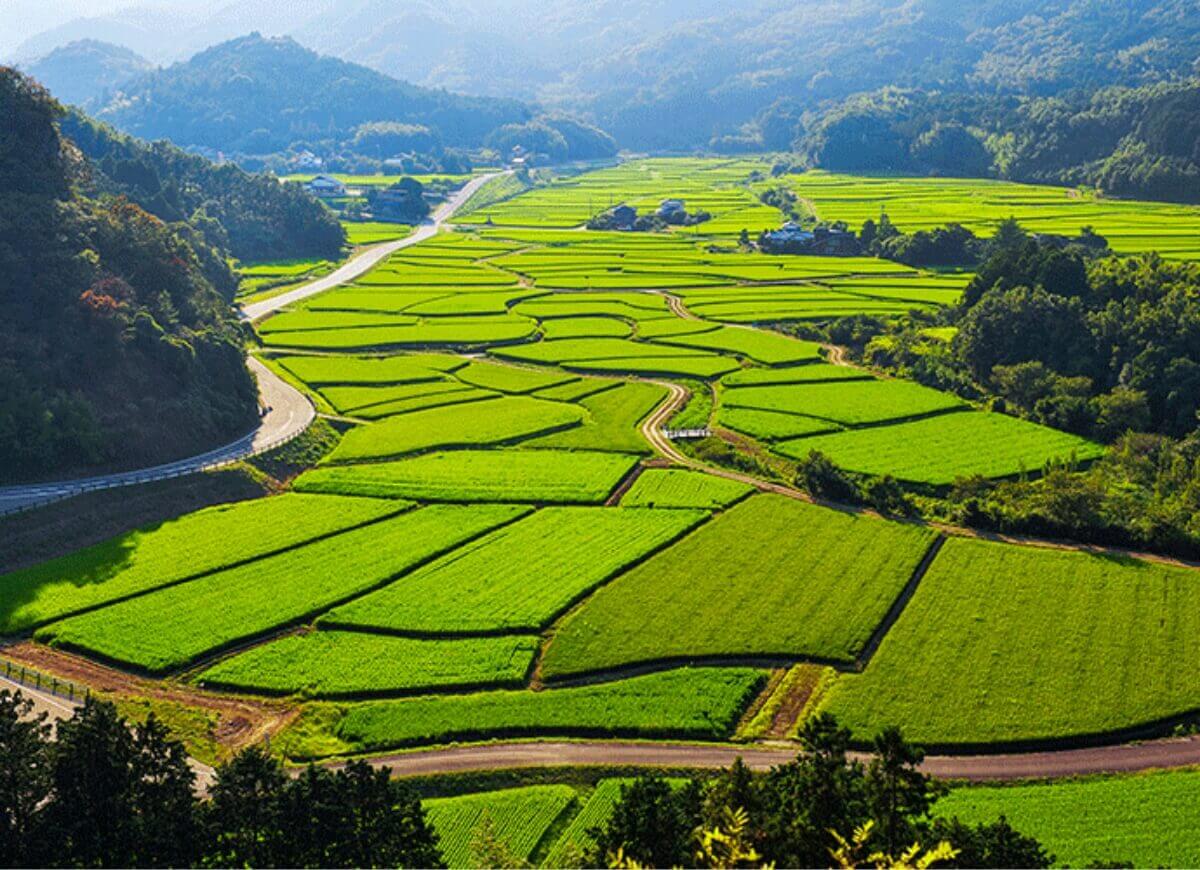
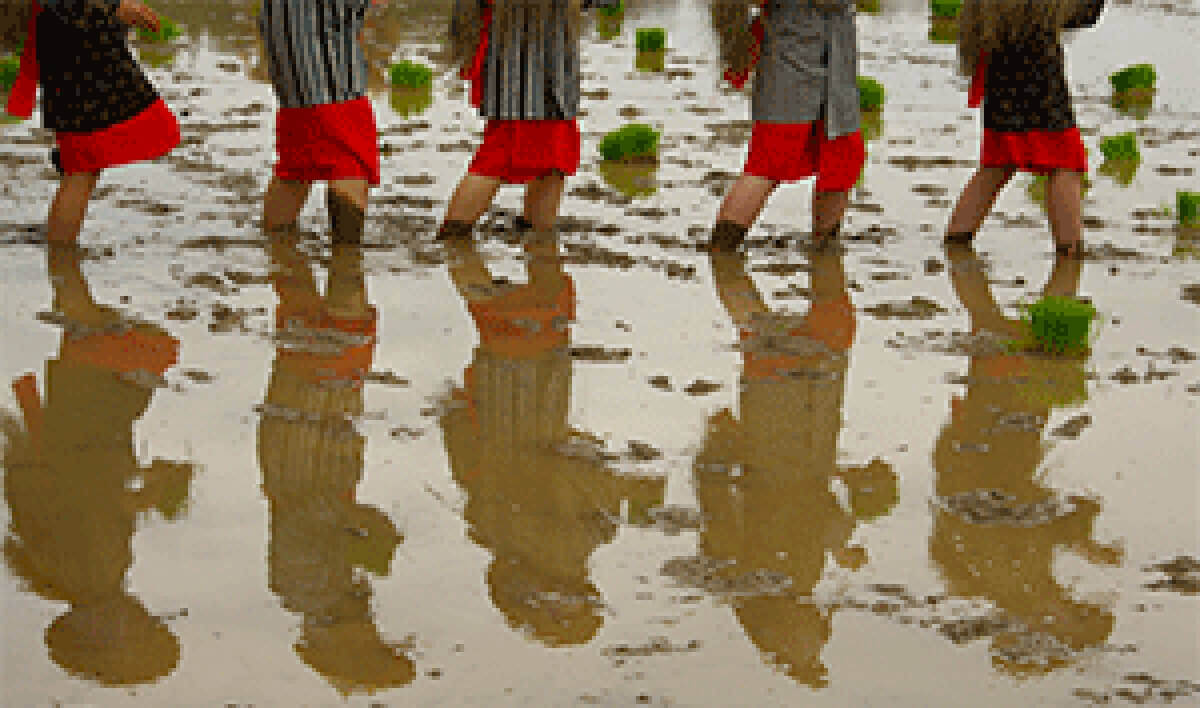
Unique festivals of the peninsula: Oni, fox, and Kebesu
Oni, mystic creature in Japan, dances, fox performs and people wore Kebesu mask and sets fire—This area has been preserving very unique festivals which you will never find in anywhere for centuries. In summer, Kitsune-matsuri or fox festival will be held in Himeshima Island which was once a Nenbutsu-matsuri, a festival to pray for god, transformed into present style in Kamakura era, 12th century.
When autumn comes, Kebesu mature, also known as a fire festival, will be held in Iwakura shrine. With a strange mask on, a person becomes “Kebesu” and run into the group called “Tuba”, a party of people wearing white outfit trying to protect fern fires from distraction. Kebesu and Tuba together scatters sparks of fire to visitors at the climax because shower of sparks believe to bring healthy life throughout a year. With its origin and purpose still remains unknown, this festival is considered very mysterious and attracting.
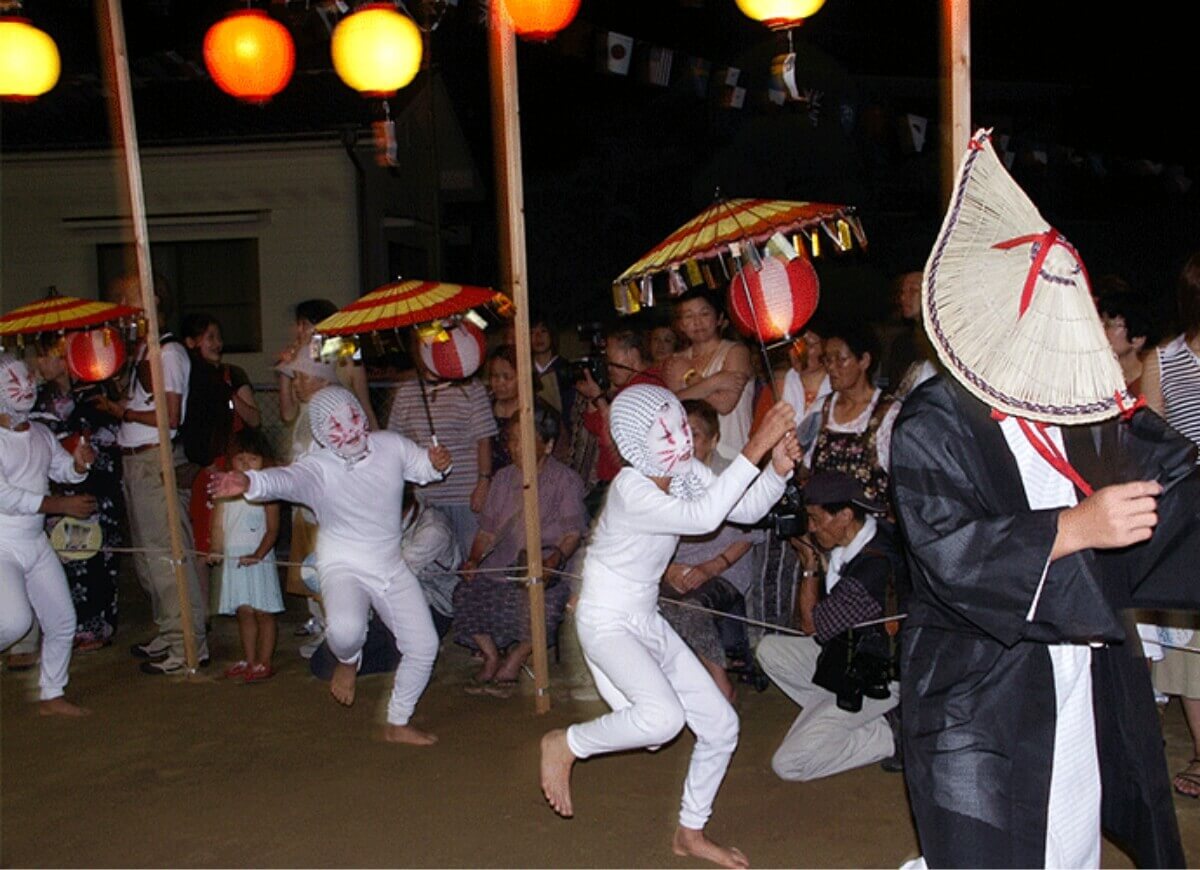
On the seventh night after Chinese New Year in winter, fires lighten the night and Oni dances. Shujou-oni-e, very unique festival in Kunisaki that was originated more than 1000 years ago, will be held in 3 temples in the area; Tennen-ji, Jyoubutsu-ji, and Iwato-ji. Since Heian era, 794 to 1192 A.D., activities called Shujou-e, praying and celebrating the huge harvest, and Setsubun, expelling Oni, symbol of catastrophe with fire and prayer, were combined together and developed into Shujo-oni-e.
With syncretism of Shinto and Buddhism, the locals continuously honoring the nature, culture and history, which made it possible to inherit precious events from people to people for long period of time.
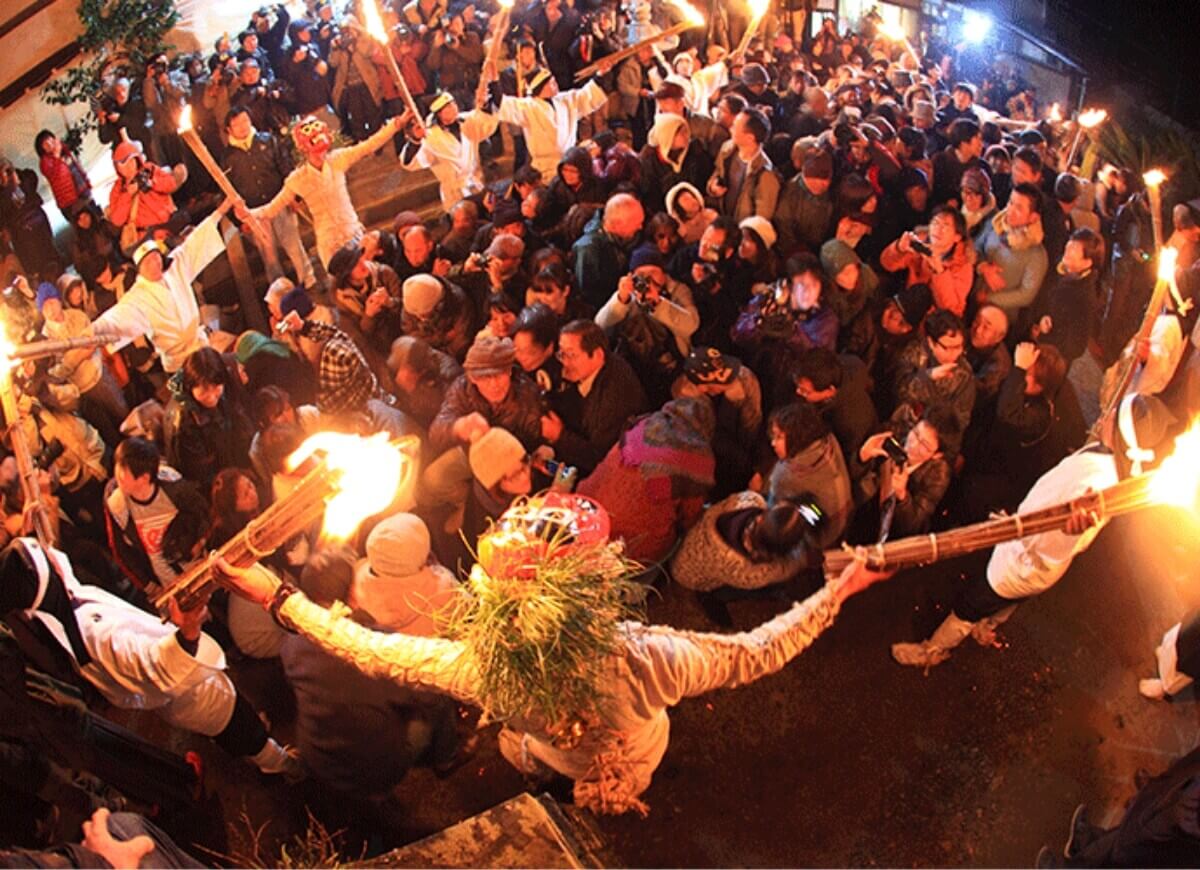
Fertile lands with rich foods
When praying, celebrating, feasting, working, and hunting…, people always pleased with local foods. Astonishingly fresh seafood from Beppu gulf and Iyo Sea has been a perfect appetizer with sake. People entertain guests and family with abundant local foods and local beverages. Sake of Kayashima Brewery, established more than 100 years ago, also has been entertaining local people. The soil with faith, great nature, and abundant foods nurtures delicious sake.


